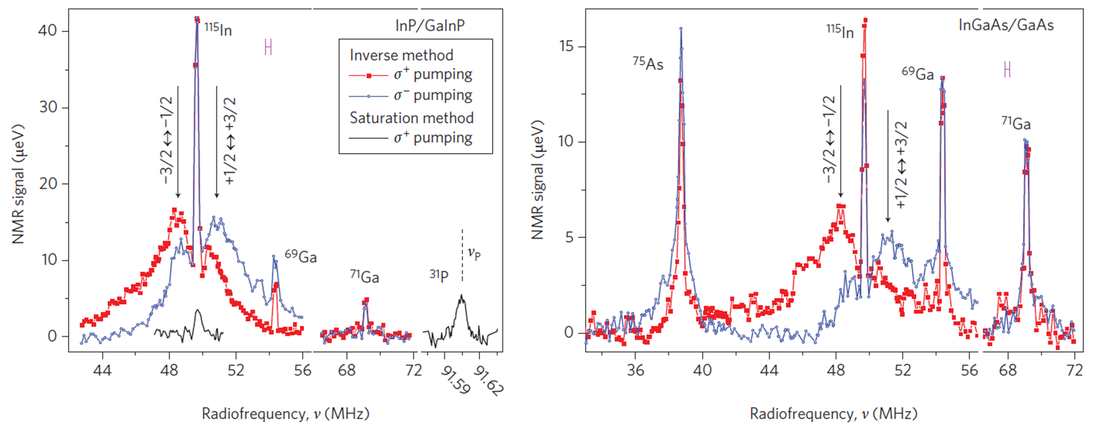|
Context of project
In-depth structural analysis of individual quantum dots is highly desirable, however, most of the available techniques are destructive. Ideally, we would like to find a noninvasive characterisation technique with capabilities for single dot studies. Optical detected magnetic resonance of nuclear spins is a well developed noninvasive technique that brings valuable structural information. The spin precession induced by the magnetic resonance condition strongly depends on the type of nucleus element, hence delivering information of element contents. However, in self-ensemble quantum dots the developed strain induces quadrupole broadening of the nuclear magnetic resonance spectra. Finding a way around this experimental limitation would allow noninvasive structural analysis of single dots, and moreover, may find applications as path for developing quantum information operations with nuclear spins. Nuclear magnetic resonance of optically pumped GaAs quantum wells ref: [1] journals.aps.org/prl/abstract/10.1103/PhysRevLett.72.1368 Our work We realize the growth of self-catalyzed core–shell GaAs/GaAsP nanowires (NWs) on Si substrates using molecular-beam epitaxy. Transmission electron microscopy of single GaAs/GaAsP NWs demonstrates their high crystal quality and shows domination of the GaAs zinc-blende phase. Using continuous-wave and time-resolved photoluminescence (PL), we make a detailed comparison with uncapped GaAs NWs to emphasize the effect of the GaAsP capping in suppressing the nonradiative surface states. Significant PL enhancement in the core–shell structures exceeding 3 orders of magnitude at 10 K is observed; in uncapped NWs PL is quenched at 60 K, whereas single core–shell GaAs/GaAsP structures exhibit bright emission even at room temperature. From analysis of the PL temperature dependence in both types of NW we are able to determine the main carrier escape mechanisms leading to the PL quench. Read more: Structural analysis of strained quantum dots using nuclear magnetic resonance E.A. Chekhovich, K.V. Kavokin, J. Puebla, A.B. Krysa, M. Hopkinson, A.D. Andreev, A.M. Sanchez, R. Beanland, M.S. Skolnick, A.I. Tartakovskii Nature nanotechnology 7 (10), 646 (2012) www.nature.com/articles/nnano.2012.142 arXiv: arxiv.org/abs/1112.4079 News and Views: www.nature.com/articles/nnano.2012.171?draft=collection&proof=true&platform=oscar Personal contribution: Sample preparation, single dot mapping and dynamic nuclear polarization study
0 Comments
Leave a Reply. |
Jorge PueblaResearch Scientist Archives
October 2020
Categories |

 RSS Feed
RSS Feed
